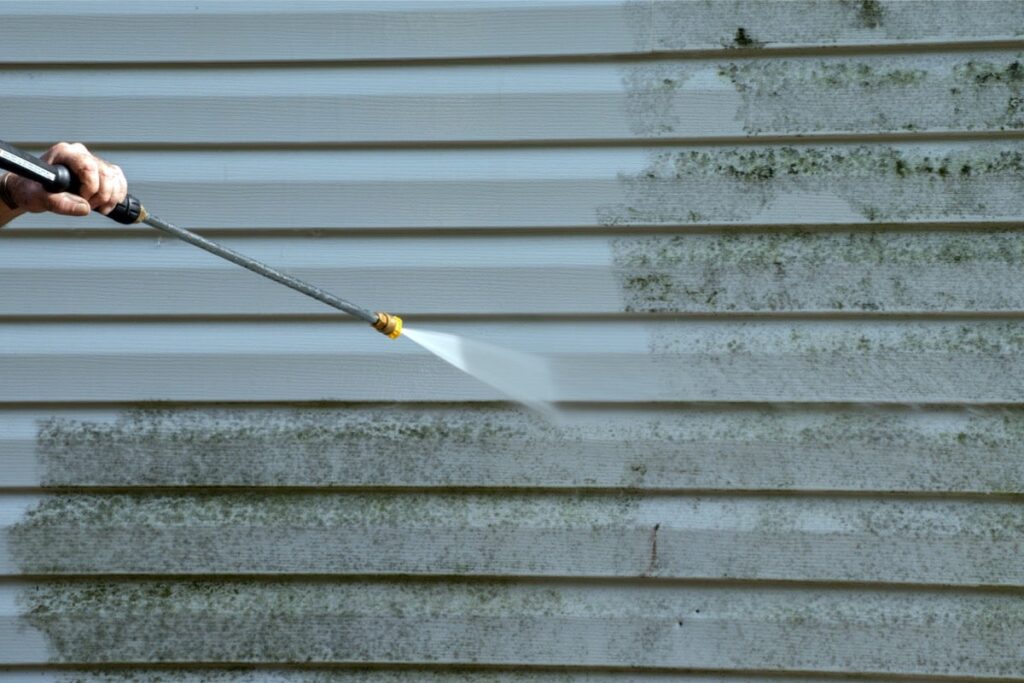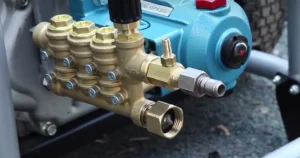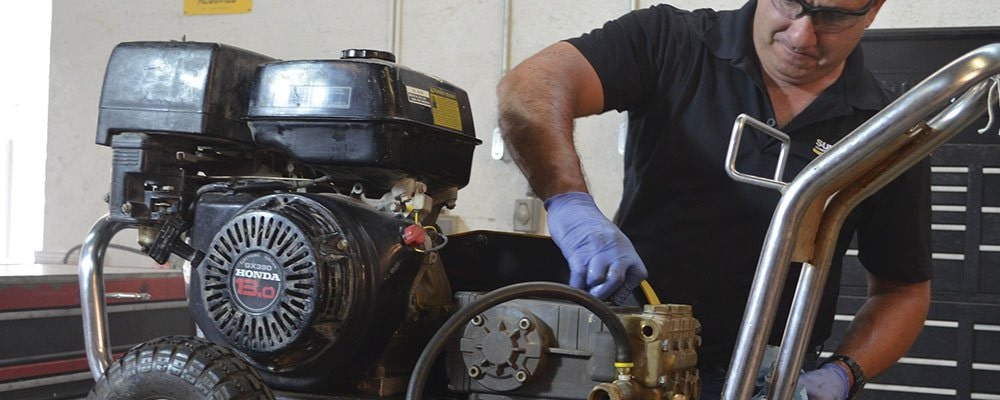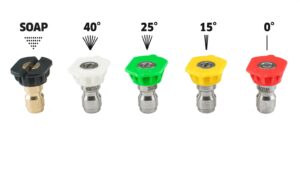 Pressure washers are expensive, but they can be used to clean buildings, patios, driveways, cars, and trucks. You can even use it to power wash your house’s walls to make them look new.
Pressure washers are expensive, but they can be used to clean buildings, patios, driveways, cars, and trucks. You can even use it to power wash your house’s walls to make them look new.
But just like every other machine, you can expect your pressure washer to have some maintenance issues. Unfortunately, they are not cheap to repair. These tips will show you how to maintain your pressure washer and how to prolong the lifespan of your pressure washer and save you from costly repairs. If you own a pressure washer, you must know how to take care of it.
Clean the Pump After Each Use
Keeping water in the pump may cause mineral deposits and rust, which can damage pump seals and cylinders (a $200 fix). It’s a good idea to rinse the pump after each use—a simple and short process.
 First, buy a pump lube/antifreeze product. Attach the garden hose connector to the pump’s inlet and push the trigger until bubbly liquid shoots out the other port. That indicates the pump is adequately lubricated and freeze-protected.
First, buy a pump lube/antifreeze product. Attach the garden hose connector to the pump’s inlet and push the trigger until bubbly liquid shoots out the other port. That indicates the pump is adequately lubricated and freeze-protected.
After each operation, flush: Connect the water hose outlet to the lubricant. For roughly two seconds, press the trigger until water and the solution goes out the opposite port.
Store Your Pressure Washer Properly
Pressure washers for home use have tiny engines expected to last for a maximum of 200 hours. However, following these easy pre-storage procedures may prolong their life.
Empty the crankcase oil and replace it with new oil, even if you use it for only a few hours. Then, turn the engine to cover all internal components with clean oil and new anti-corrosion agents. This will give the optimum storage protection and prepare the machine for the following season.
Always begin running the washer with a new treated gas and clean fuel. Start the engine and let the treated gas reach the carburetor. Then, drain the tank and run it to dry. Before storing the pump for the winter season, properly flush it out. If you keep the pump with water and store it in a cold place, the engine may break.
Use Hose Extension
When cleaning a large surface, you definitely want to pick a pressure washer that can go the distance. Most residential pressure washers come with a 25-ft. hose. That means you must lug the machine up the stairs to wash your deck or constantly shut down the engine so you can move the device as you work. These steps can cause damage to the machine.
The solution to this problem is to buy a model with a longer hose or use a hose extension. Using your hose with a quick connector may cause a slight drop in pressure and volume, but it should be sufficient for most surfaces. A lower pressure setting will be best if you don’t want to risk damaging the surface.

Change Degraded O-rings Regularly
Pump failure is the worst thing to happen to your pressure washer, but it’s not the only one. The enormous pressures produced by your washer put all its components under a lot of strain. When specific parts begin to fail at this strain, leaks occur quickly.
Many O-rings are utilized in the machine to ensure impermeable seals in areas like the water input source, the hose attachment port, and the spray gun connection point on the hose. These rubber rings can withstand significant use before being broken, flattened, or otherwise incapable of directing water where it’s meant to go.
As leaks worsen, your machine will have a more difficult time producing the necessary amount of pressure. Fortunately, you may avoid leaks by examining and changing your O-rings regularly.
Use the Recommended Cleaning Agent
When using pressure washers for everyday cleaning, it is easy to get overzealous in your cleaning and think that any old cleaning fluid will do. Unfortunately, this will often result in a buildup of soap scum, dirt, and residue in your pressure washer. This buildup is unpleasant to look at and can also affect your pressure washer’s performance and longevity.
For this reason, it is best to use only cleaning fluids designed for pressure washers. These cleaning fluids are made to break down easily and leave your pressure washer as clean as a whistle. This will help to prevent many issues that could occur due to a buildup of dirt and residue.
Use the Right Pressure Washer Nozzle
It’s important to use the proper nozzle for the type of cleaning that you need and for pressure washer safety. If you’re working on a soft material like wood, you’ll want something with a low pressure or a soft tip. However, if you’re working on something like brick, you’ll want to choose a high-pressure or a hard nozzle.

If you’ve never used a pressure washer before, using one can be a bit confusing. There are three different types of pressure washer nozzles that you can use. These three are the fan, foam, and turbo. The fan nozzle sprays a flat, wide swath of water. The foam nozzle uses soap to create foam that sticks better to vertical surfaces. The turbo nozzle uses a concentrated stream of water that can remove tough stains like grime, grease, and oil.
Other brands use color-coded nozzles. Red produces a zero-degree angle, suited for the most powerful cleaning duty. Yellow has 15 degrees, best for peeling paint or other heavy-duty cleanings. For removing everyday grime and stain, the Green nozzle is the best. For delicate cleaning, a White nozzle can do the job.
Follow Your Pressure Washer Maintenance Schedule
Your pressure washer usually comes with User Manual and Maintenance Schedule. These two documents are important sources of the proper maintenance procedures for the machine.
The Maintenance Schedule contains a checklist of the care tips before, during, and after using the pressure washer. Necessary procedures are divided into different timeframes to tell you what to do after a few months, a year, or a couple of years.
If you can’t find the printed documents, go to the manufacturer’s website and look for your machine’s model. Typically, most sites contain a link to the checklist you need to perform to prolong the washer’s lifespan. Click on the link, and you will get the step-by-step process of properly cleaning, storing, and fixing your machine.